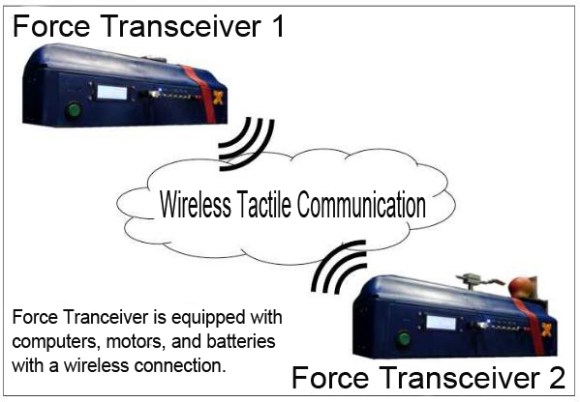
Prof. Onishi hopes that this technology can be used in robotics such as carrying out precise work in environments too hazardous for humans. Not only that, work that would require direct, personal contact such as physical therapy could be done anywhere in the world with an almost identical level of quality.
By remotely connecting with a robot it could be commanded to perform complex motions while making delicate changes in strength exactly like a human would. Similar types of systems exist but the Force Transceivers also provide the user with realistic physical feedback instantly.
For example, a reporter from AFP tested some Force Transceiver devices which resembled the two small blue coffins seen above. Each has a slider connected wirelessly through Force Transceivers. Sliding one would cause the other to move at exactly the same time as if they were physically connected.
One device had a fork attached to the slider and an apple was placed at the end of the box. When the reporter slid the corresponding box they could actually feel the fork pierce both the skin and flesh of the apple just as if they were physically doing it with their own hand. To achieve this highly sensitive and instant feedback, Force Transceiver uses processors and WiFi connections several times the speed of those currently available on the domestic market.
This high level of responsiveness opens the technology up to a wide range of applications. In the case of therapy, Force Transceivers could eliminate the need to travel for both the therapist and patient but provide exactly the same sensitivity on both ends. This could also allow people greater access to a world of highly skilled hands in any field. You could conceivably have a world famous painter create a work in your living room from across the globe.
In addition, Prof. Onishi’s team hopes Force Transceivers could also be used with diminished or amplified strength, meaning it could be used to performs delicate micro-surgeries or say, lift an X-wing fighter out of a swamp in the Dagobah System.
It’s a promising technology that could help the world in many ways. Still, I can’t help but selfishly look forward to when those WiFi speeds they’ve been using hit the greater public.
Source: Keio University, AFP via Hachima Kiko (Japanese)